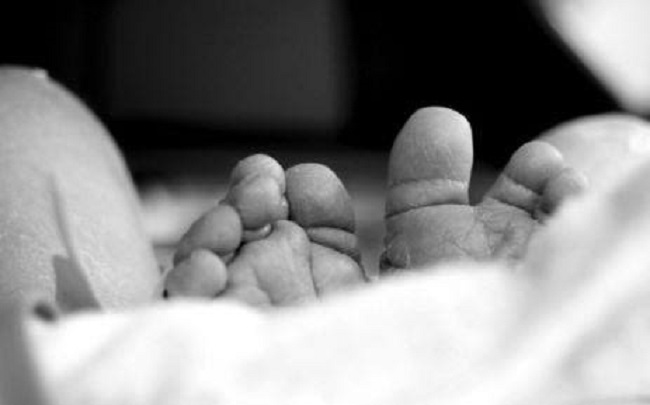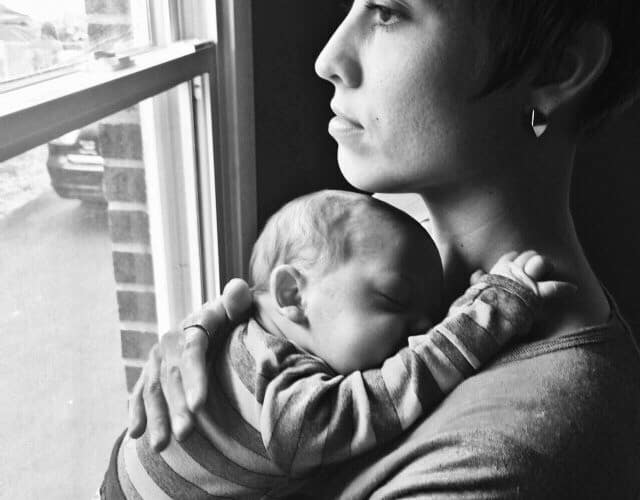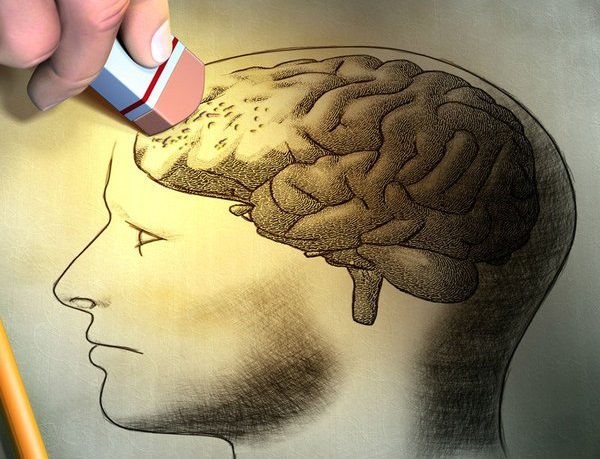In part one of this series I noted that my approach to postpartum depression research was a little bit different than most others. Namely, I didn’t ascribe to either the nomenclature of the syndromes, whether defined by popular culture or by the DSM, the timing of the onset of the symptoms nor the explanation of the causes. I think the symptoms are largely hormone related, and as such, ought to be distinct entities diagnostically. That requires understanding, testing and then defining the spectrum of symptoms and their relationships with individual and hormone patterns. I’d like to discuss symptoms first, even though this particular research was conducted after finding hormone – symptom relationships and informed by the patient stories collected in conjunction with that research.
Postpartum Depression or Not?
Not, but with a caveat.
As I accumulated data for my hormone symptom study, those data along with participant stories led me to design a broad-based symptom study for postpartum women (this particular study did not include pregnant women, as some my other studies did). I wanted to test whether the typical designations of postpartum depression clustered statistically within discrete but consistent diagnostic categories. Did postpartum depression exist and if so, did the symptoms mirror those in the DSM or in the popular science? Or was depression just one among many types of symptoms that emerged and how would those symptoms fall together statistically? In other words, I wanted to test what the women were telling me about their experiences and against what my other data were showing. The study:
Dimensions of Postpartum Psychiatric Distress: Preliminary Evidence for Broadening Clinical Scope
Study Basics. The study was online with questions covering nine dimensions of postpartum mental health that I had found relevant in previous work: depression, anxiety, mania, psychosis, obsessive-compulsive behavior, self-image, social support, mental status and perceptions of motherhood. The questions were retrospective and the participants were asked to rate the frequency of symptoms experienced over the first 30 days following childbirth on the following scale: 1-never, 2-occassionally, 3-frequently, 4-most of the time. We had 215 women complete the survey. From those data we did an exploratory factor analysis (EFA) to see how the symptom data grouped itself statistically. Did the symptoms group by established psychiatric dimension e.g. depressive symptoms in a depression category, anxiety symptoms with the anxiety category, psychosis with psychosis, etc.? Or would the symptoms group in some other manner?
Results. As I expected, the standard categories were not statistically grouped. That is, there was no such thing as postpartum depression or postpartum anxiety or postpartum psychosis. Rather, there were unique clusters of symptoms that grouped together and contained aspects each traditional symptom category. The EFA data revealed 10 new and distinct factors or symptom groups. Most telling were the first three factors or groupings: mental status, psychoticism/morbid thoughts and a general anxiety. Notice, I didn’t find a depression grouping. Indeed, depressive symptoms were interspersed throughout the 10 categories, but most densely and the most severe within the psychoticism group. Let me explain. Here are the 10 symptom groups or factors, listed in order of importance or prominence (variance accounted for):
- Mental status – This was the most prominent cluster of symptoms, with upwards of 40% of the women reporting difficulty with two primary areas of mental status: memory and attention, and motivation – or lack of motivation. Some of the symptoms ascribed to within this group included: difficulty completing simple tasks and staying focused, mind going blank, difficulty organizing thoughts, losing track of time, no motivation, difficulty expressing thoughts, fatigue and loneliness among others. From other research conducted, we know that measurable cognitive difficulties, especially those associated with attention and memory, are common problems amongst pregnant and postpartum women. That this was the highest ranked factor, meaning that it accounted for the most variance, was consistent with my previous work.
- Psychoticism and morbid thoughts – This was the most striking category and accounted for what many would consider the most troubling symptoms. This factor grouping included everything from intrusive and morbid thoughts, to hallucinations and suicidality. It truly represented what would have been the most serious of psychiatric conditions but was not akin either to a strictly depressed state or psychosis in the most traditional sense or even to an obsessive compulsive disorder, emphasis on obsessive. Rather it had components of each, uniquely focused on the maternal state. Some of the symptoms ascribed too included: images of the baby being stabbed or thrown out of a window, fear of harming the infant, thoughts of violence, hearing voices to harm myself or others, inability to keep bad thoughts out head, afraid to be alone with baby, afraid of harming self, frightening dreams, the feeling that others want to harm me (the mother) or the baby, feelings of terror, no hope for the future, feel like someone is controlling one’s thoughts, worrying that the infant will suffocate.
- General Anxiety – this grouping of symptoms is what I believe may represent milder forms of distress that to some degree all women feel as they enter into motherhood. Some of the symptoms include: ‘I believe others see me as a bad mother’,’ I think I am a bad mother’, confusion, no confidence, overwhelmed, mind racing, losing control, constantly being judged, no one understands me, among others.
The remaining seven factors or groupings were somewhat more specific to traditional psychiatric categories but also included psychosocial aspects relative to self-image, relationship and social support. They also accounted for far less statistical variance, indicating some degree of specificity to certain groups of women rather than being applicable to most postpartum women and/or were far less relevant to the overall distress. These groups included:
- Panic – fear of large crowds, fear of leaving the house, feeling keyed up, restless, on edge, skin crawling
- Guilt and emotionality – a range of guilt related feelings, but also, mood lability – switching from happy to sad, quickly and frequently
- Compulsive behaviors – cleaning and checking
- Hyper-vigilance – a sense that the new mom was the only one who could care for the child
- Contentment – positive relationship, social support, and general well being
- Negative self-image – range of negative self-image attributes, along with a sense that her body was shutting down –that something was wrong with her.
- Mania – hyper excitable, excessive energy despite a lack of sleep, impulsive behavior
What Does This Mean?
The results from this study suggest that neither the current diagnostic categories nor the popular nomenclature appropriately categorize the types and severity of postpartum related mental health issues. Depressive symptoms were neither the most common symptoms nor contained within a defined category. Rather depressive symptoms were interspersed throughout each category with the most severe depression symptoms, loss of hope and suicidality loading to the psychosis/morbid thoughts category. Along with the more severe depression symptoms, this category contained hallmark psychosis symptoms like hearing voices, seeing things, but also what could only be described as violent, frightening intrusive thoughts.
What was particularly interesting is that mania, which has long been linked to postpartum psychosis, was neither present in the psychosis/morbid thoughts category nor accounted for much variance at all within this study. This could mean that mania is not a common component of the most serious forms postpartum distress for most women, but rather a distinct subset of the disorder. Instead, it may be the violent intrusive thoughts and the hallucinations that are associated with the most serious symptoms of depression – the suicidality. From these data, the postpartum spectrum is not from mild sadness (baby blues) to more intense sadness or postpartum depression to psychosis but rather based on the degree and severity of intrusive thoughts and hallucinations – the degree of psychotic symptoms may very well determine and drive the ‘depression.’ Additional research will tell if this is the case.
Addendum
Phase II of this study, a follow up confirmatory factor analysis was begun, some data collected (n=100), but not completed. When the economy tanked in 2008-9, I, and many other adjunct faculty were let go. I hope to resume this research soon through Hormones Matter.









